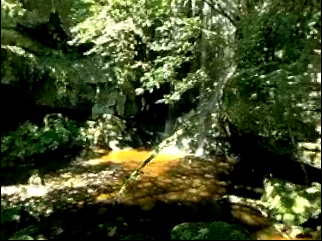
Figure 2: Roughting Linn Falls: the central feature of the Roughting Linn group of rock art in Northumberland is this gorge and waterfall, the original Roughting Linn or Thundering Pool.
Click on image to view panorama.
The Milfield Basin in Northumberland (figure 5) is constrained to the east by an area of upland moors. The western edge of this upland region is studded with rock outcrops, many of which have rock carvings. The QTVR scene of the Roughting Linn (meaning thundering pool) group starts at a panorama of the waterfall, after which the whole site is named.

Figure 2: Roughting Linn Falls: the central feature of the Roughting Linn group of rock art in Northumberland is this gorge and waterfall, the original Roughting Linn or Thundering Pool.
Click on image to view panorama.
This is the central feature of a very beautiful and unspoiled group of shallow gorges that form a natural focus for the area that the carvers of the rock art are likely to have regarded with some respect. The panorama is an attempt to capture the texture and form of the vegetation close-up as well as the play of light through the more distant trees. A degree of image processing has been applied to the image, creating the slightly glowing edges of the vegetation and giving the scene a slightly 'otherworldly' quality, such as might be experienced in a 'altered state'.
QTVR does not allow the unconscious or conscious modes of perception/movement that might give a full sense of the 3D reality and presence of the space, but the ability to move around at will - albeit rooted to the spot - comes close. Panning round the waterfall itself, the pool below it, the horizontal branch, the rich vegetation on the near bank, and the stream running through the image from right to left allow the navigator's viewpoint to flow from feature to feature. Focus moves from close to distant to close again, giving a strong sense of the closed-in/open-ended nature of the gorge.
It is not possible using QTVR to move smoothly down the river to follow the gorge. However, links to other panoramas downstream might maintain the continuity, the sense of place and space, especially if the transitions were smooth cross-fades, a technique available for future development. With careful planning, a series of linked panoramas might lead the navigator along the gorges and up to the carved stones above, creating some sort of perceptual resolution of the local topography; in effect a 3D mental map of the area. In the event, that level of recording was not possible for this study but further work will be undertaken at a later date.
In fact the hot-spot on the path (highlighted in red in each panorama in the complete 'scene' file) takes the navigator direct to the main carved stone above. Here four panoramas have been captured that do go some way to creating a mental map of the space immediately around the stone. From the waterfall the link jumps to a viewpoint or 'node' in front of the stone (figure 4 - rlinnd). To the left is another node from which a slightly broader view (figure 3 - rlinna) of the carvings can be seen. Neither of these images has been processed heavily so the carvings are not very clear. Some work has been undertaken to photograph the carvings at night using a low incidence light source to create high contrast shadows. In future versions, these will be included in the panorama (a similar effect can be seen on the Barnishaw and Badger stone carvings but more work needs to be done developing this technique).
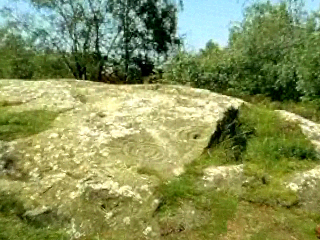

Figure 3 (left): .The main Roughting Linn rock carvings to the north-east (node a)
Figure 4 (right): The main group of rock carvings on the north side of Roughting Linn (node d)
(click on image to view QTVR panorama)
From node A, a further link is provided to nodes B and C. These show the eastern and southern sides of the outcrop (respectively). Again, in these unprocessed images not much detail can be distinguished but some feeling for the size and profile of the stone can be determined. From node C a link is provided back to the initial node, D, and, as with all four nodes around the stone, all nodes are interconnected allowing the navigator to move with a degree of freedom around the space. Ideally, an additional panorama node on top of the stone, and more detailed 3D 'object VRs' of specific carvings would give a greater feeling of presence to the simulation. For someone who has not visited Roughting Linn, however, the beginnings of a mental map of the site should have started to form after a few minutes navigation.
Returning to node D, the view in front of the stone, and panning round it shows that the site is quite heavily wooded. It would take an expensive and time-consuming computer graphic reconstruction of the area in full 3D to remove this vegetation completely. Nevertheless, some simpler processing work could be used to reveal the lines of sight to surrounding hills so that the idea of intervisibility could be explored.
The pattern of intervisibility between the groups of rock carvings in southern Northumberland is shown in the illustration based on fieldwork by Ruth Saunders (figure 5).

Figure 5: The pattern of intervisibility between groups of rock carvings in north Northumberland based on fieldwork by Ruth Saunders (after Bradley 1997)
Click to view individual panoramas.
Eventually all of the sites mentioned will be captured as panoramas and linked with hotspots. In this study, only Roughting Linn, Dod Law (figure 6), Gled Law (figure 8 and 9) and Weetwood (figure 7) are included in the complete 'scene' file. From Roughting Linn the present view is obscured by vegetation but standing in front of the stone at node D, a hot spot can be accessed just above the stone that will take you direct to the top of Dod Law. From here links in the 'scene' file are provided to Gled Law and Weetwood to illustrate possible intervisibility. The arguments for and against intervisibility are beyond this article, but even from this small sample the potential of this technique for illustrating such large-scale landscape phenomena is clearly demonstrated.
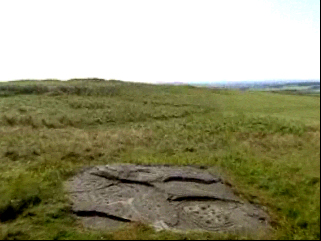
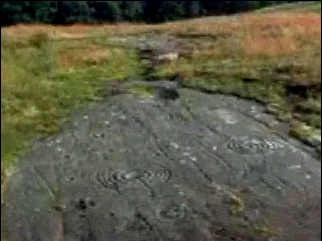
Figure 6: The best known carving at Dod Law looking north east across the stone toward Roughting
Linn and Goatscrag hill (left).
Figure 7: The multiple concentric ring carvings of Weetwood Moor, Northumberland (right)
(click on images to view panoramas)

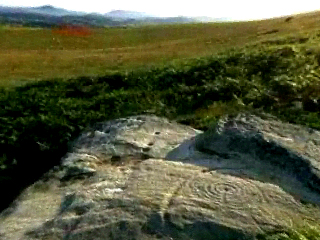
Figure 8 (left): Beckensall's Gled Law looking south across the stone toward Weetwood Moor
Figure 9 (right): Beckensall's Gled Law looking south across the stone toward Weetwood Moor and
beyond to the Cheviot Hills
(click on images to view panoramas)
© Internet Archaeology
URL: http://intarch.ac.uk/journal/issue8/larkman/9.html
Last updated: Mon Sep 25 2000